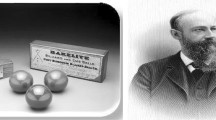Abstract
The community and trophic structure of mites was examined in cattle manure and their response to treatment of manure with solid-waste particles was investigated. Mites were collected from artificial dung pats exposed to natural colonization in the field for 16 days. The pats were composed of manure alone or manure separately mixed with waste-material particles of four types and concentrations.
Mites were the numerically dominant taxon among arthropods in manure. The Prostigmata was the most abundant suborder, mainly represented by the families Pygmephoridae and Ereynetidae. The common families of Mesostigmata were all cosmopolitan. Correlations with other arthropods suggest that Mesostigmata are opportunistic predators, preying upon dipteran larvae, Collembola and other mites, and preyed upon by larger predatory insect larvae. Cryptostigmata and Astigmata were a numerically minor community component.
The species composition and abundance upon treatment of manure with polyethylene, polystyrene and glass particles was similar to that of the treatment control, i.e. natural and inert sand. Relatively low concentrations, 5 and 30% (v/v), of particles in manure did not alter the mite communities despite important differences with untreated manure in final moisture content. These findings may be relevant to proposed methods of solid-waste disposal. High particle concentrations of 60 and 90% had detrimental effects to the abundance of mites in manure and were caused by the very low final moisture content and probably nutrient deficiency of these treatments. The persistence of members of the prostigmatid families Tydeidae, Nanorchestidae and Tarsonemidae in the moisture-deficient 90%-concentration treatments supports previous evidence of adaptations to low-water-content habitats.
Similar content being viewed by others
References
Alejnikova, M.M., Artemjeva, T.T., Borisovic, T.M., Gatilova, F.G., Samosova, S.M., Utrrobina, N.M. and Sitova, L.I., 1975. Successions of micro-organisms and invertebrates and their connections with biochemical processes during the decomposition of manure in soil. Pedobiologia, 15: 81–97.
Anonymous, 1972. Soil Series of the U.S., Puerto Rico and the Virgin Islands: Their Taxonomic Classification, USDA/USGPO, Washington, DC.
Anonymous, 1985. SAS User's Guide: Statistics (Version 5 edition) SAS Institute Inc., Cary, NC, 956 pp.
Axtell, R.C., 1963. Acarina occurring in domestic animal manure. Ann. Entomol. Soc. Am., 56: 628–633.
Baker, E.W. and Wharton, G.W. (Editors), 1959. An Introduction to Acarology. McMillan, New York, 465 pp.
Covarrubias, R., Orellana, W. and Valderas, J., 1982. Succession of microarthropods in the colonization of cow dung. Rev. Ecol. Biol. Sol., 19: 363–381.
Evans, G.O. and Till, W.M., 1979. Mesostigmatid mites of Britain and Ireland (Chelicerata: Acari-Parsitiformes). Trans. Zool. Soc. Lond., 35: 139–270.
Faber, M.D., 1979. Microbial degradation of recalcitrant compounds and synthetic aromatic polymers. Enzyme Microbiol., 1: 226–232.
Karg, W., 1983. Distribution and importance of predatory mites of the cohort Gamasina in relation to their effects on nematodes. Pedobiologia, 25: 419–432.
Kethley, J.B., 1989: Acarina: Prostigmata (Acaridida). In: D.L. Dindal (Editor), Soil Biology Guide. Wiley, New York.
Krantz, G.W. (Editor), 1978. A Manual of Acarology. Oregon State University, Corvallis, 509 pp.
Nakamura, Y., 1976. Decomposition of organic materials and soil fauna in pasture. 4. Disappearance of cow dung and succession of the associated soil microarthropods. Pedobiologia, 16: 243–257.
Norton, R.A., 1985. Aspects of the biology and systematics of soil arachnids, particularly saprophagous and mycophagous mites. Quaest. Entomol., 21: 523–541.
Parker, L.W., Santos, P.F., Phillips, J. and Whitford, W.G., 1984. Carbon and nitrogen dynamics during the decomposition of litter and roots of the Chihuahuan desert annual,Lepidium lasiocarpum. Ecol. Monogr., 54: 339–360.
Sokal, R.R. and Rohlf, F.J. (Editors), 1973. Introduction to Biostatistics. Freeman, San Francisco, 368 pp.
Southwood, T.R.E. (Editor), 1978. Ecological Methods with Particular Reference to the Study of Insect Populations. Methuen, London, 524 pp.
Streit, B., Buehlmann, A. and Reutimann, P., 1985. Mite succession in compost communities: studies with Oribatei, Camasina, and Uropodina. Pedobiologia, 28: 1–12.
Usher, M.B. 1985. Population and community dynamics in the soil ecosystem. In: A.H. Fitter (Editor), Ecological Interactions in Soil. British Ecological Society/Blackwell, London, pp. 243–265.
Usher, M.B. and Booth, R.G., 1984. Arthropod communities in a maritime Antarctica moss-turf habitat: three-dimensional distribution of mites and Collembola. J. Anim. Ecol., 53: 427–441.
Valiela, I., 1974. Composition, food webs and population limitation in dung arthropod communities during invasion and succession. Am. Midl. Nat., 92: 370–385.
Weil, R.R. and Kroontie, W., 1979. Effects of manuring on the arthropod community in an arable soil. Soil Biol. Biochem., 11: 669–679.
Wood, T.G., 1971. The distribution and abundance ofFolsomides deserticola Wood (Collembola: Isotomidae) and the other microarthropods in arid and semiarid soils in southern Australia, with a note of nematode populations. Pedobiologia, 11: 446–468.
Author information
Authors and Affiliations
Rights and permissions
About this article
Cite this article
Stamatiadis, S., Dindal, D.L. Coprophilous mite communities as affected by concentration of plastic and glass particles. Exp Appl Acarol 8, 1–12 (1990). https://doi.org/10.1007/BF01193377
Accepted:
Issue Date:
DOI: https://doi.org/10.1007/BF01193377




